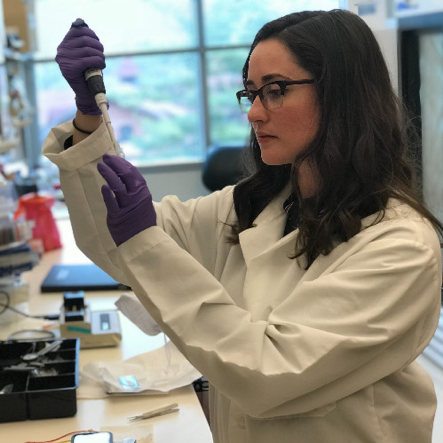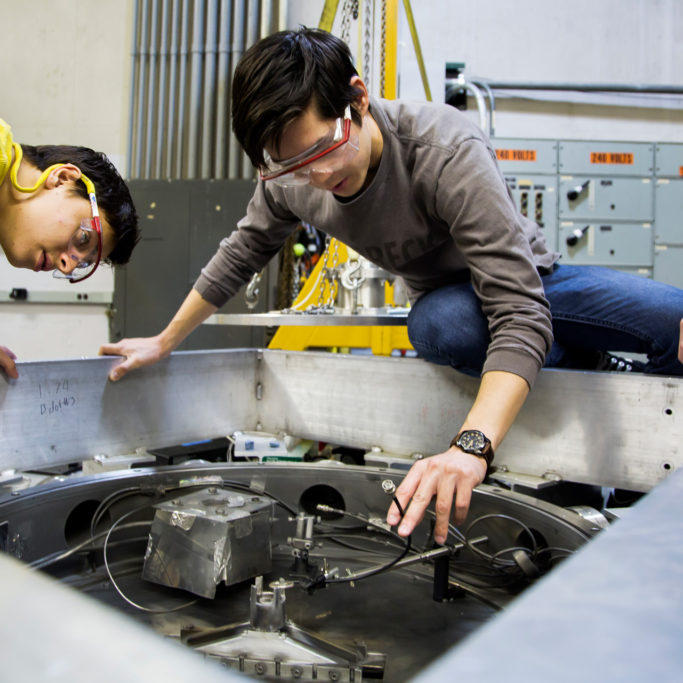[et_pb_section admin_label=”section”]
[et_pb_row admin_label=”row”]
[et_pb_column type=”4_4″][et_pb_text admin_label=”Text”]Having 20/20 vision is a term used to express normal visual acuity (the clarity or sharpness of vision) measured at a distance of 20 feet. Many say that hindsight is 20/20, meaning that once something has happened you can see clearly what should or should not have happened.
If you ask most researchers, or anyone for that matter, they would love the opportunity to have a clear picture of the future. Talk about saving them time, money, and potential frustration if they find out there’s no market or need for what they’ve spent years on.
Research is driven by a sense of curiosity and a tendency to explore, but we want more than that. We want to have an impact; feel or see someone using what we have built to feel that sense of purpose. Practicing your purpose gives you a sense of fulfillment.
The CFE, as a member of the Midwest I-Corps Node program, offers The Introduction to Customer Discovery course as a taste of the Lean LaunchPad method to give participants a working knowledge of how to think about their opportunity from a business and customer perspective, as well as how to properly conduct customer discovery interviews; the first step in any commercialization process. The course provides a set of skills and entrepreneurial knowledge that can be applied to any career path.
Meet Tim Fairley, a researcher in the Civil engineering department. He was working on developing bioreactors that can purify wastewater in a quick and efficient way. A desire to see his inventions being used in the real-world, Tim decided to perform customer discovery by participating in the Intro to Customer Discovery course. He quickly pivoted away from municipalities (who he conceived as his initial customer) to wastewater management in breweries who get penalized for exceeding the quota of wastewater in the sewer system and are willing to adopt his solution at this early stage.
Customer discovery is the process of conducting systematic interviews with stakeholders in a specific industry to understand if there is a need for a product or service. Just like in science, hypotheses (or assumptions) regarding a business model are created. These are then tested by talking to potential customers and stakeholders. Based on the learnings from the interviews, they are validated, invalidated or modified. The process is iterative and the goal is to narrow down which customer segments have a “hair on fire” problem to care enough about your solution.

Learning how to apply what their customers needed, and not just what they had created, Parabricks was spun out of the University of Michigan by Dr. Mehrzad Samadi and Dr. Ankit Sethia along with their advisor Prof. Scott Mahlke based on their PhD research. They wanted to explore the idea of giving fast computing tools to developers with their graphic processing units (GPUs) but when they did customer discovery, they realized that people wanted to buy software not the tools to build it. They initially targeted autonomous vehicles to process the huge amount of data required to power them but through further customer discovery, they found that the auto industry had already invested in this area and moved on. They then settled upon/found their niche in genomics as the killer application that also needs to crunch a lot of data in a small amount of time.
The knowledge and skills gained from this experience are valuable since it teaches us how to ask the right questions and assess the opportunity before we commit a lot of our time and effort to actually developing it.
Talk about a clear vision for your future.
Click here to learn more about how you can apply this approach for your idea or research. [/et_pb_text][/et_pb_column]
[/et_pb_row]
[/et_pb_section]


